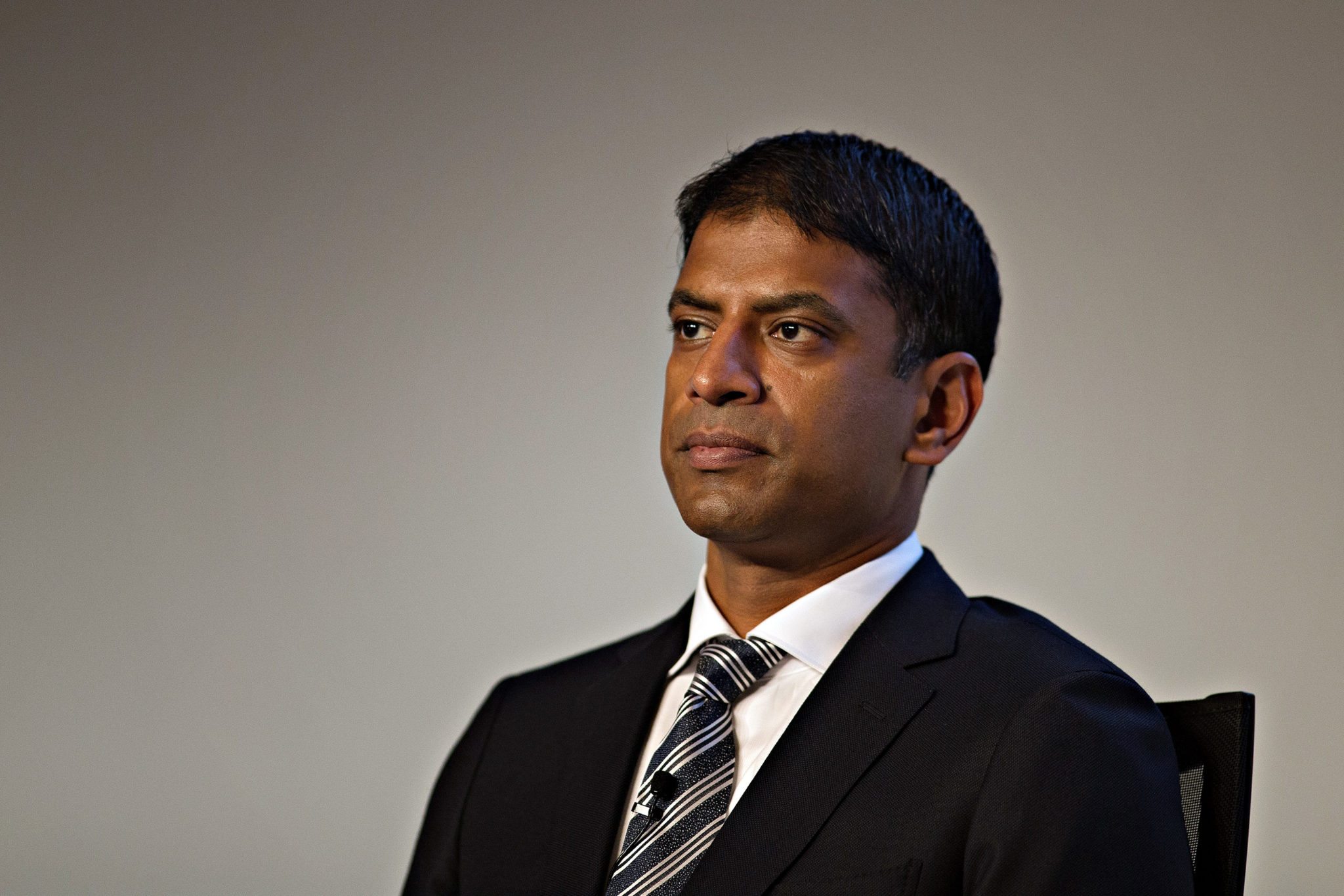Friday, November 10, 2017
Hello, chris johnston
Basic Subscription
B
Upgrade|Reader Center|Log out
results
Novartis outlines its full case on why RTH258 can carve out a big piece of the AMD market held by Regeneron
by john carroll — on November 10, 2017 04:51 PM EST
Vasant Narasimhan, Novartis’ CEO-designate bloomberg
Soon-to-be Novartis $NVS CEO Vas Narasimhan peeled back the cover on more detailed Phase III data for its blockbuster Eylea rival RTH258 on Friday evening, explaining why he believes the pharma giant has a $1 billion-plus drug for wet age-related macular degeneration — which has one other hurdle to clear before making a slightly paused arrival at the FDA.
In a preview of data being released at the American Academy of Ophthalmology conference in New Orleans, the pharma giant’s development chief once again hit on the 52% to 57% success rate for their two big Phase IIIs. That handily cleared the 40% to 50% bar needed to qualify for an impressive success set by some analysts covering the company.
Novartis is betting that moving patients from once every 8 weeks for Regeneron’s flagship therapy to a 12-week regimen will win over a big slice of the market. But they’re backing up the appeal to patients with a pitch to payers and physicians, offering evidence of the drug’s ability to reduce the fluid that builds up behind the retina as the disease progresses.
“Payers wants to see fluid issues resolved to make sure the disease is controlled,” noted Narasimhan in a conference call with reporters. The drug, he explains, is a novel antibody fragment that is built in a way that allows an injection to squirt a high concentration of therapy into the eye. Better penetration is a key part of its argument that this drug can be more effective at longterm care than Eylea as well as the Novartis/Roche drug Lucentis.
After 16 weeks of dosing there was a 30% active reduction of disease in comparison with the Eylea group, he added. There was a 33% and 35% reduction at week 16 with retinal fluid, and a 41% reduction for the RTH258 group after 48 weeks in one study, compared to the competitor.
The drug, says Narasimhan, “was consistently superior to Eylea.” And there’s a lot at stake, with Regeneron taking in $953 million in US Eylea sales in Q3.
But there is one potential hitch. Novartis obtained the drug through the acquisition of a small company, through which they inherited one manufacturing process. Novartis subsequently developed its own process and now regulators want the pharma team to run some patients through a small test to see if the new process holds up equally well.
As a result, Narasimhan says the company plans to file at the end of next year, rather than hustling the drug to the agency now, as most manufacturers would prefer. That’s toward the end of the H2 2018 schedule that Novartis has told investors, putting back any commercial showdown with Regeneron until later in 2019, as Narasimhan looks to move into his new job assuring investors that the company knows how to develop big new products.
That will buy Regeneron some more time to line up a possible competitive response. They’re working on nesvacumab (Ang2)/Eylea Phase II studies in DME and wet AMD that analysts are watching closely.
- Forums
- ASX - By Stock
- BLT
- AMD
AMD
-
- There are more pages in this discussion • 10 more messages in this thread...
You’re viewing a single post only. To view the entire thread just sign in or Join Now (FREE)
Featured News
Add BLT (ASX) to my watchlist
Currently unlisted public company.
The Watchlist
I88
INFINI RESOURCES LIMITED
Charles Armstrong, CEO
Charles Armstrong
CEO
SPONSORED BY The Market Online






